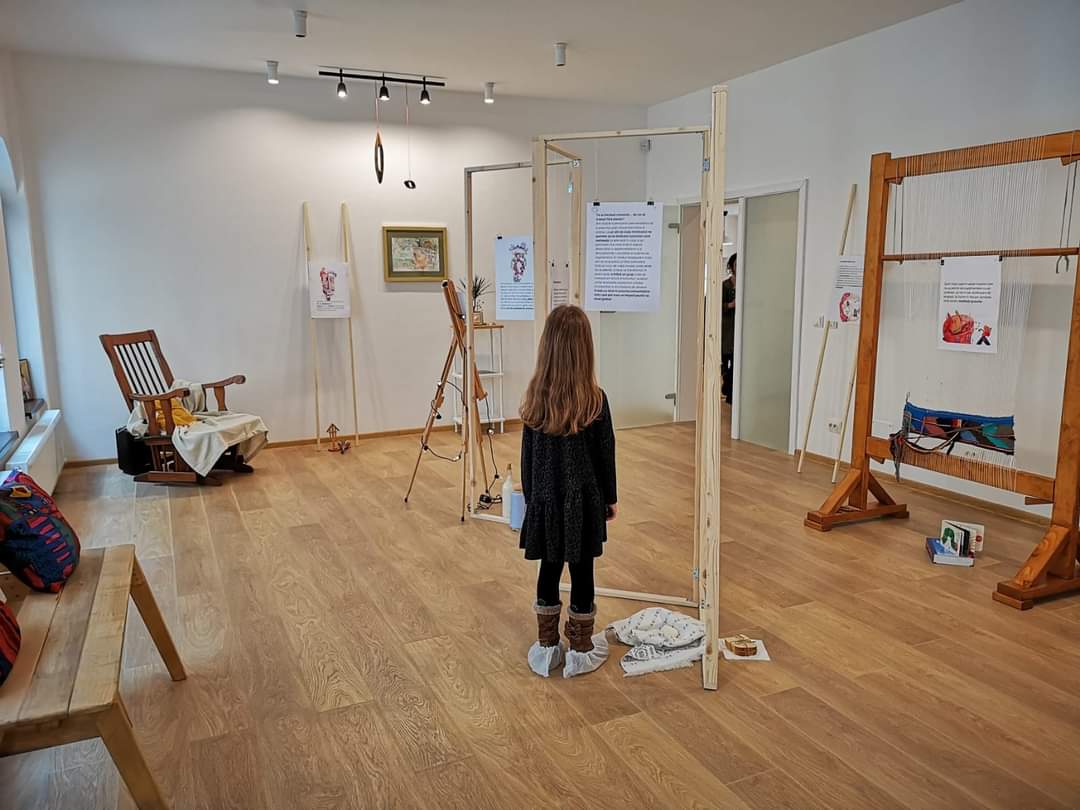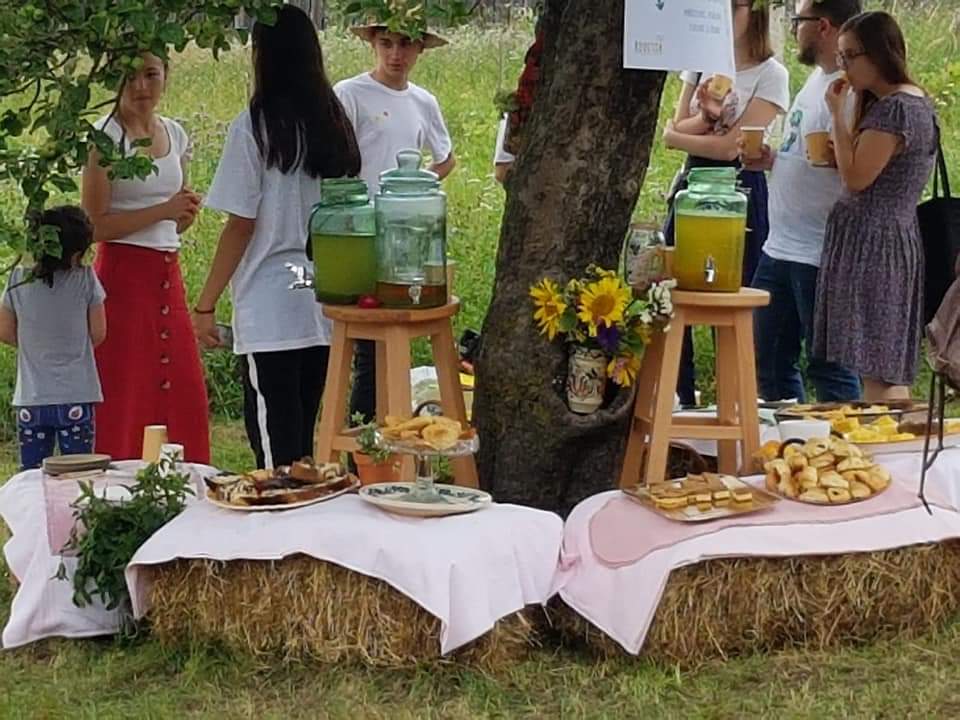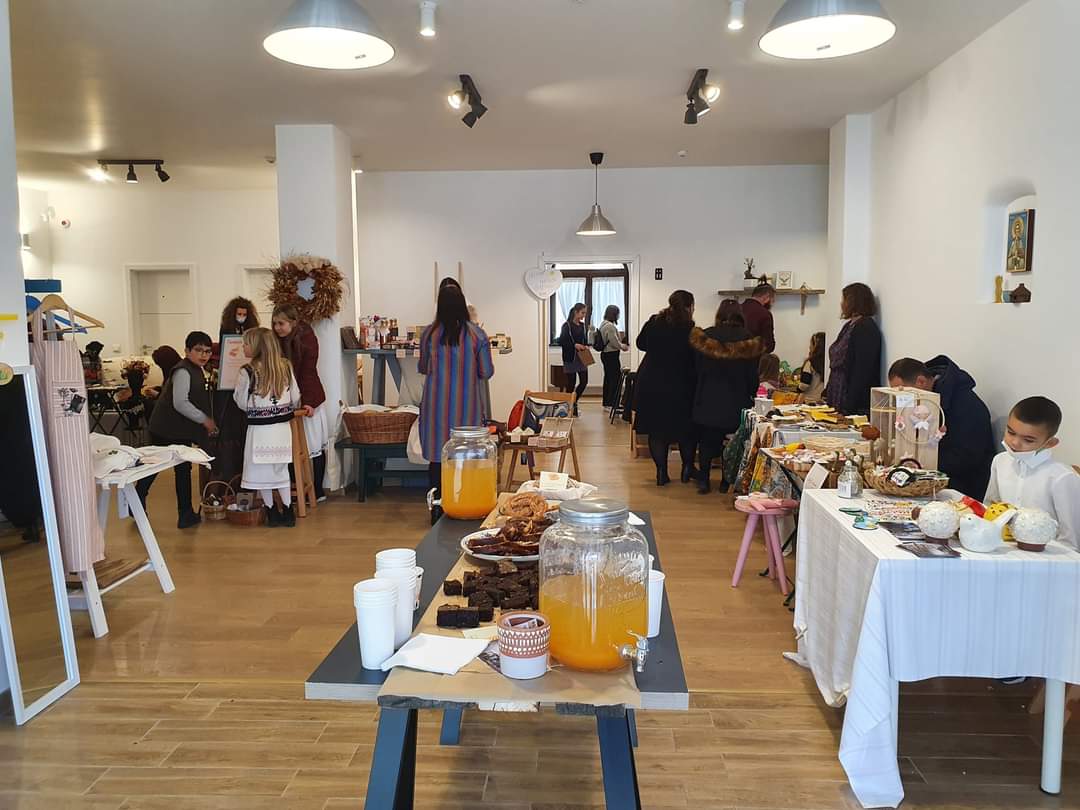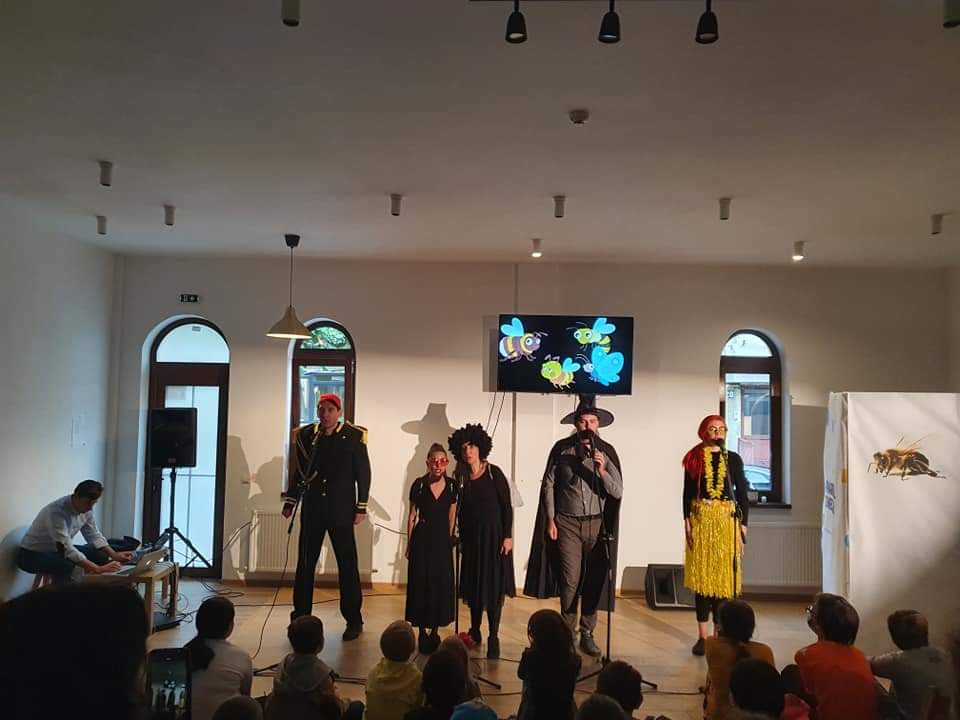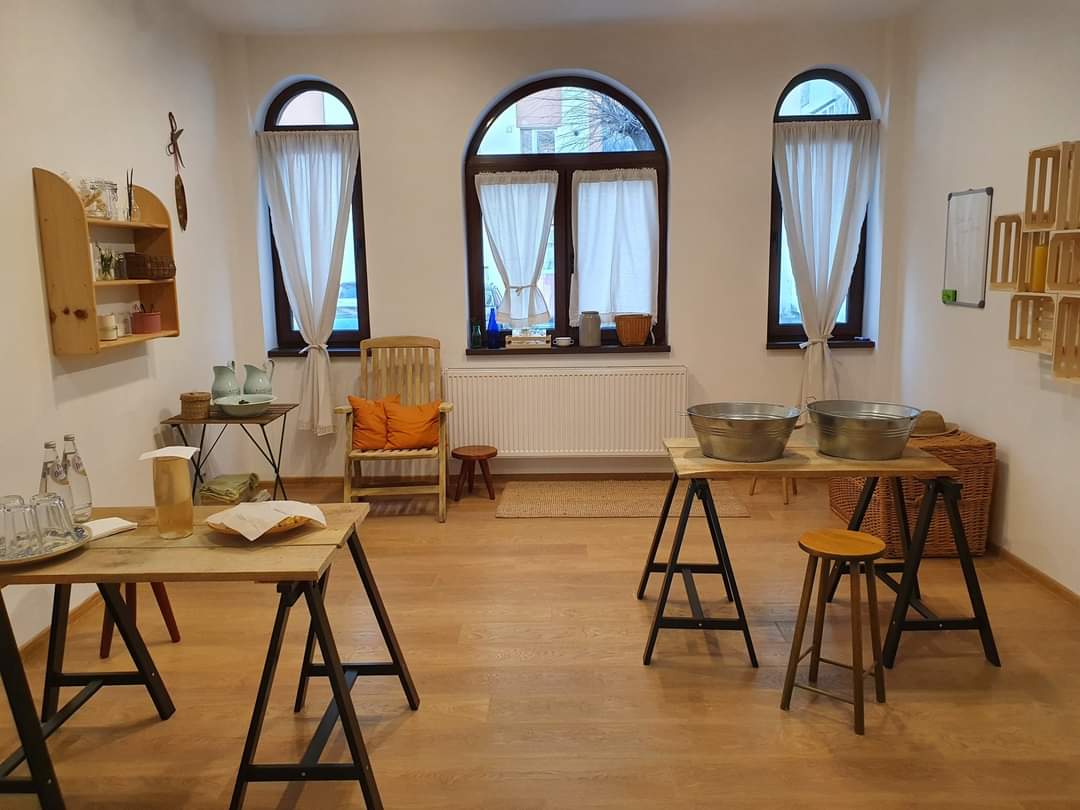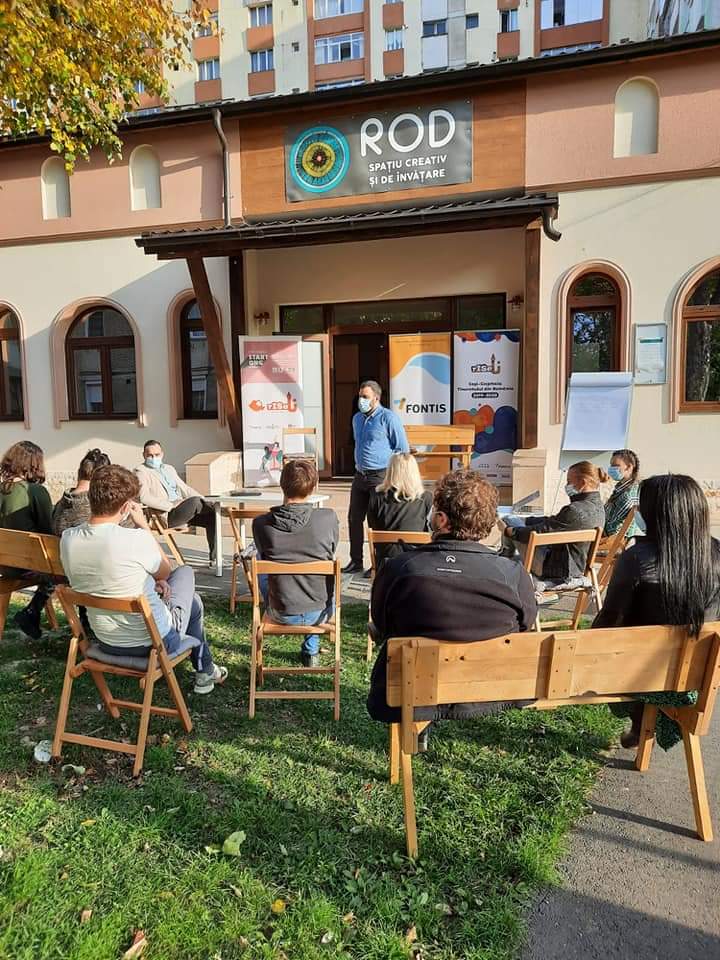ROD
Basic information
Project Title
Full project title
Category
Project Description
ROD is a space that was repurposed from an old heating station into a community space. We believe that in each of us there are seeds of goodness that must be helped grow. ROD is a school of good deeds where we learn practically how to do good through stories, good design, nature, meaning, community, creativity and learning. We build on local culture, traditions and craft and developing creative skills and thinking, a spirit of involvement and mutual learning for children, adults and families.
Geographical Scope
Project Region
Urban or rural issues
Physical or other transformations
EU Programme or fund
Which funds
Description of the project
Summary
The project ROD was built on the ruins and old pillars of a decommissioned building that housed the city heating system. All the apartments in the city have installed micro-heating systems on gas so the building remains unused. From an ugly building that 20 years ago was the source for hot water to heat thousands of apartments and families, we renovated it into a central heart of the community, creativity and education.
Its strategic location between big and grey apartment blocks restored the pride and the brought the community an example of how to reuse and repurpose old buildings into positive impact projects. The project has been supported by the mayor, city council, county council, local NGOs, parishes, volunteers, local business owners, architects, designers and schools. Each one of them played an essential part into making ROD a real project, from giving financial support to bringing expertise, energy, time and network.
ROD creative and learning Space has over 300 sqm and 8 rooms dedicated to specific activities: room for children, library to read and relax, workshop to create and craft, room for traininns and meetups, 2 places for volunteers and 2 big halls for events. The differentiator is a mix of design, natural materials, local experts knowledge, educational and creative resources, and a dedicated team to unite them all.
The objective was to create a space where the experience, the vibe and the feeling will create a safe context for creativity, learning and building projects on how to do good around you. Also, ROD is a place where is great to meet with the community or start a community based on same values. We have at least 9 communities formed around ROD and because of ROD.
In the last 2 years we tested and validated many programs and projects that connected rural with urban (Gate to the village project), that shoceased and connected local producers (Roditor fair), that educated to to good (School of good deeds), involved volunteers and the community
Key objectives for sustainability
From the beginning, at ROD we had as our main principle love for nature and we have integrated this in many forms. We integrated in the space design using natural and local materials. We have used reclaimed wood to build shelves, and we have received donations of furniture. Also, because one of our objectives is to help local economy, we designed furniture in-house and build it with help of local carpenters. Based on the same objective, we created a project, a fair for local artisans and producers where educated the people to buy locally and short-chain products. Also, some artisans are creating objects from reclaimed textiles or products and giving them another life.
The program for children included a fundraising part where they were reusing materials and giving them another destination, and also, creating small projects to collect good clothes and other products for the disadvantaged families. By teaching children to create products and fundraise for causes, we teach them entrepreneurial skills so can found later small businesses with a positive impact to solve local or global challenges or problems.
All our programs or events try to be 100% zero waste and no plastic, and we partnership a local zero waste shop to bring educational and real content in front of them. We created a project to connect the village to the city.
But, we developed our ROD concept of circularity and sustainability: good deeds that are growing and transforming into a snowball effect. Pay it forward and give before you get are strong principles in our creative and learning space.
ROD is a space where people have the same opportunities and can learn, practice and live a better life without compromising the local environment.
Key objectives for aesthetics and quality
From the beginning, we knew how the building should be inside and outside. We, as a team, we're in love for design and we were against to any kitsch approach. We have integrated cultural, spiritual, traditional and local symbols and materials. Our attention to detail went so far that every corner in the 8 rooms should be a place where you would love to stay, to talk, to be and to take an Instagram photo.
We have designed a flow journey from the front door until the last wall or window. We focused on experience, textures to touch and feel, on eye-catching design, and good natural smells. We instaled white and glass doors to transmit transparency and an inclusive place. The furniture is qualitative and designed for long-term lasting and we decorated with products meant to be a heritage over the years.
We focused on warm lights to create a warm context and a like-home feeling.
We designed dedicated rooms for different types of participants: kids room (chalk painted wall - you can paint anything anywhere without restrictions - be creative), library room place to read, talk, meet, write and work, the workshop for patience - the place decorated functional to be the place to create hand made objects and where patience is practised. The upstairs room for bigger meetings and traditional events like sezatoare - the event where the elders teach the youth to saw or make carpets, the place where tales are told or are made, a place where you meet with the others. The theatre or training room - designed like a very small amphitheatre with 3 steps where you can choose to stay on a chair, on a relaxing coloured bean bag or just on a pillow. The toilets were also designed to be warm places and also for disabled. Our focused goes also in the design & aesthetics of events and programs - we handpicked products and artisans, all the children are wearing white organic t-shirts, we created beautiful wooden fair stands.
The logo design and the colours used were specially created.
Key objectives for inclusion
ROD is about creativity, but also about learning about fairness, respect, emotional intelligence, empowerment and growth, a safe environment, trust binding.
We offer equal opportunities to our participants. We have the door open for everyone. Our programs and space are created also for families with many children, single-parent families, low-resources people, village children, city children, of any age.
Anyone can find a place to get involved or be involved based on their needs.
Regarding citizen engagement we have many ways to get people involved: we have youth volunteers that come weekly, we have adult volunteers involved in education, the management or creative projects, we have donors and philanthropic giving context and all are engaged or a part of one or more communities with similar goals. Many of them are in direct service by giving personal time and energy to address immediate community needs.
One good example is co-founding a pandemic local initiative called Vivid to help the hospitals with equipment and materials. Over 100 adult volunteers helped and our space became the Headquarters and storage unit for medical equipment. We received donations of over 200.000 Euro to help the local hospitals.
Related to co-design, our community-based thinking helped us the co-desing the rooms, the programs with and for volunteers or with children, or events with partners or local NGOs.
Accessibility - toilets specially designed to better accommodate people with physical disabilities, two entrances, no doorsteps between rooms, only one floor,
Affordability - almost all the events are free for beneficiaries. But the payed events are having very low prices for the tickets - the ticket price is just for controlling the number of participants and, also, to be perceived as valuable or just to create a co-responsibility and a feeling to contribute to the program or cause. The beneficiaries from the villages (rural areas) do not pay anything in any program.
Results in relation to category
Regaining a sense of belonging by bringing a meaning for the place and for the community is a perfect definition on what ROD is making.
The spirit or the vibe of the place celebrates diversity in every corner or program is organised.
Another way o saying it is: ROD is a physical transformation of a building connected with a rich heritage and traditions to spark creativity to empower communities and dynamize cultural, educational and artistic live styles in one connected place.
At ROD we developed processes, products and business models to help people to contribute to restoring the heritage and to shape future projects based on millenary local knowledge.
We created and co-founded 6 programs or projects to show that this is possible, vibrant and much-neded. And this is possible by making it very simple, going bak to the roots and taking what is good and relevant for contemporary communities. Over 4000 people were present and got involved, or beneficiated from the programs build in ROD space by the community: Roditor - 6 editions, Oameni pe Hogas - 1 edition, Poartă către Sat - 3 editions, Scoala de fapte bune - 3 editions.
Over 30 partnerships and local institutions were involved in planning, or used the spaces, or participated to events or programs.
ROD became a place were projects are made, became a hub for people the want to be part of the solution and to create it.
These are the communities created because of ROD or who gathered at ROD: blood donors, craft makers, zero waste brands, local producers & artisans, school teachers in search of creativity, community made library, community made workshop, donors for the spaces, volunteers community and much more.
How Citizens benefit
Architects and experts were involved pro-bono to design, build and furnished the space.
NGOs helped to raise awareness, to fundraise or to organise events at ROD space.
The first community of blood donors in the county was founded by ROD with over 240 members.
A community of craft makers, zero waste brands, local producers & artisans, gatehres for the first time and created or have been part of the 6 editions of Roditor. It is a continuous co-creation and adapting project.
School teachers in search of creativity come at ROD with their students for a a fresh an creative air.
More than 20 people answered our call to make community made library with over 300 books.
Community made workshop - volunteers and children got involved in making the workshops.
A lot of donoers and ambassadors donated money, time, energy or expertise for the spaces.
Over 30 volunteers are involved frequently in ROD project.
One of the best benefit of the involvement of the citizen is the fast growth of the projects, but also is a continuous validation of our activity.
We learn from each interaction and we adapt our programs to their needs.
Their support, their involvement and their time is motivating and empowering us to grow and make the project bigger and have impact a regional or national level. Without their support ROD cannot exist.
Physical or other transformations
Innovative character
ROD is an alternative to main stream education - it is a place to practice the values, apply and develop your personality. Beeing a non-formal school for learning in a creative way how to make „good” based on community and local products is, for sure, an innovative approach.
Is a great validated example that a regenerative process of a building is a great way to restore pride and to shape future-oriented ambitions for communities at local leve.
The degrees of optimism and joy that we encounter in our spaces and events are motivating us to keep up the good work and, also, to build more and reach much more people. Mainly, we repurposed a space and we created the context for many positive intergenerational exchanges and community-building projects.
The good design, the educational approach and the ”open for everyone” for make a positive impact in your community, is a great recipe for solving local challenges and empower people.
The unexpected mix of approaches and principle itself is the innovative character.
Learning transferred to other parties
There is a great potential for transferring the results and learnings of the project. We are now working to grow the project at a regional level and opened spaces with the help of another local communities from the other 2 cities. This is based on the validation that many of the participants came from other regions to visit the space and attend our programs. We received a lot of requests to open such places in other cities. After almost 2 years of building, testing, validating and developing the concept of ROD we are confident that ROD is a project where good design, sustainability and inclusion are very well bound and connected to create a safe space and a vibrating impact community. In the last 8-12 months we started to create a handbook which documentation, principles, values, approach and methodology needed for a ROD space to function at high levels and have the appropriate positive impact in the peoples' life.
We are building the documentation and the strategy to do so. Our approach on this subject is based on the involvement of the local community, public and private institutions, and the request for developing a team and replicating the concept. The basics needed includes a space or a building that has no use for years, maybe even abandoned or a ruin.
The empathy, emotional intelligence, patience, community spirit, creativity & learning principles are a must for the team that will manage the project.
The created and validated curricula & methodology are helping the future team on how to organise the main projects: The School of good deeds, Roditor and Volunteers Center. The documentation includes: budgeting, financials, description of modules, materials needed, planning, contract templates, agenda, hours, duration, team, how to recruit volunteers, the profile of a ROD volunteer, where to find them, how to keep them. Regarding communication: we have graphic templates, tone & voice of the messages, channels to communicate and promote, copywriting.

